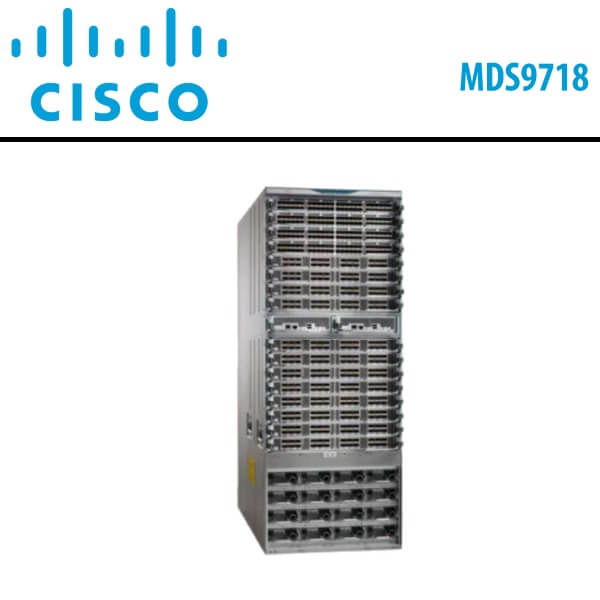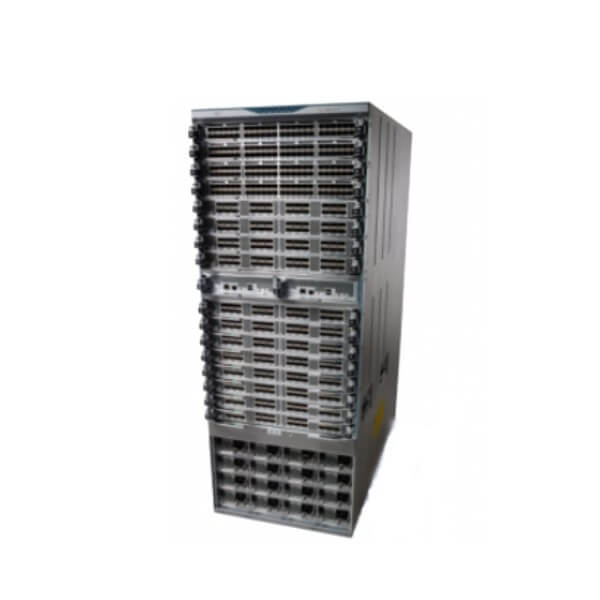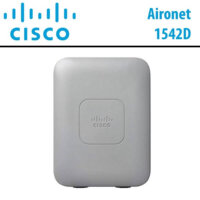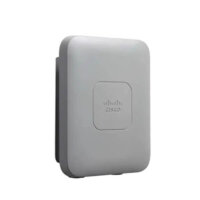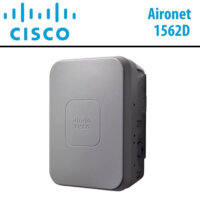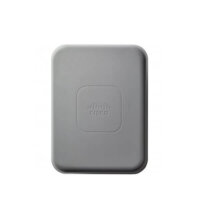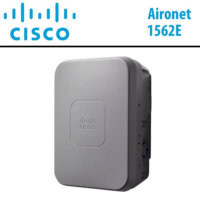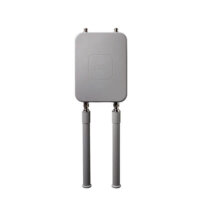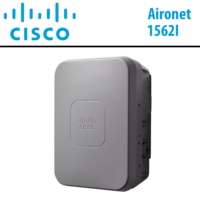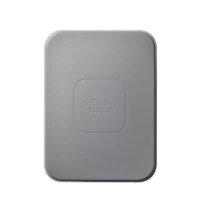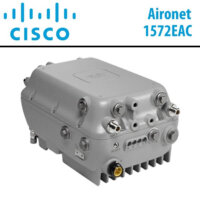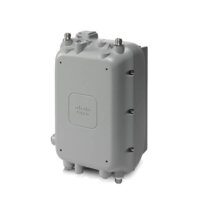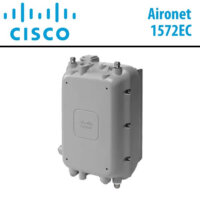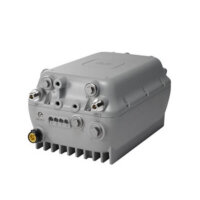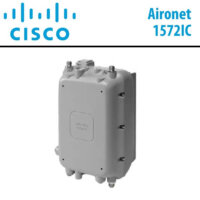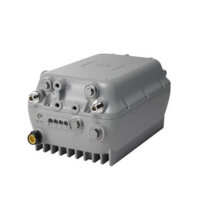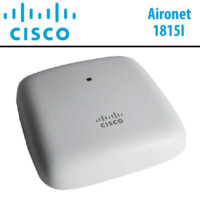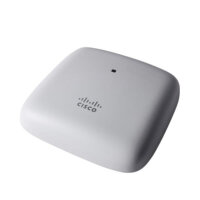Description
Cisco MDS9718 Dubai
The Cisco MDS9718 Dubai, boasts the highest port density in the SAN director industry, featuring 768 line-rate 32-Gbps Fiber Channel ports. This impressive capability is supported by the next-generation port ASICs and a fully dedicated Network Processing Unit on the new 32-Gbps line card, enabling real-time analytics calculations. Additionally, the Cisco MDS9718 Dubai accommodates the Cisco 24-port 40-Gbps Fiber Channel over Ethernet (FCoE) line card and Cisco MDS 9000 24/10-Port SAN Extension Module. Designed for midsize to large enterprises, the Cisco MDS9718 Dubai facilitates SAN consolidation and collapsed-core solutions, reducing the number of managed switches.
Addressing the rigorous storage requirements of large virtualized data centers, the Cisco MDS9718 Dubai operates as a director-class SAN switch, sharing the same operating system and management interface as other Cisco data center switches. Its intelligent capabilities are embedded in a high-performance, protocol-independent switch fabric, providing uncompromising availability, security, and scalability. The switch simplifies management tasks and offers the flexibility to integrate new technologies seamlessly.
Moreover, the Cisco MDS9718 Dubai supports the transparent deployment of unified fabrics, incorporating Fiber Channel and FCoE connectivity, thereby ensuring a low Total Cost of Ownership (TCO) while allowing for future growth.
Features
Outstanding SAN performance
6 Cisco Fabric-3 crossbar switching modules enables up to 3 Terabits per second (Tbps) of Fiber Channel throughput in each direction for each of the 16 MDS 9718 payload slots. Based on central arbitration and a crossbar fabric, Cisco MDS9718 Dubai architecture provides 64-Gbps line-rate, nonblocking, predictable performance across all traffic conditions for every port in the chassis. The MDS 9718 ships with six fabric modules and is ready for 768 line-rate 64-Gbps Fiber Channel ports.
High availability
The Cisco MDS9718 Dubai provides best-in-class availability. The director meets the same industry-leading availability standards as the other Cisco MDS 9700 Series Multilayer Directors. All major components, including the fabric card, are redundant. You get grid redundancy with the power supply and 1+1 redundant supervisor, and you can add a fabric card to enable N+1 fabric redundancy. Cisco MDS9718 Dubai combines non-disruptive software upgrades, stateful process restart and failover, and full redundancy of all major components for best-in-class availability.
Fully integrated SAN analytics
The Cisco MDS9718 Dubai features the best-in-class enterprise switch offering state-of-the-art SAN analytics and telemetry capabilities that have been built into this next-generation hardware platform. This new state-of-the-art technology couples the next-generation port ASIC with a fully dedicated Network Processing Unit designed to complete analytics calculations in real time on the 32-Gbps line card. This new capability is extended due to the hardware capabilities of the 48-port 32-Gbps line card (DS-X9648-1536K9). The telemetry data extracted from the inspection of the frame headers are calculated on board (within the switch) and, using an industry-leading open format, can be streamed to any analytics-visualization platform.
Industry-leading scalability
Power the largest storage environments with up to 48 Tbps of Fiber Channel bandwidth. A single chassis delivers 768 2/4/8-Gbps, 4/8/16-Gbps, 8/16/32-Gbps or 10-Gbps full line-rate autosensing Fiber Channel ports, or 768 10-Gbps FCoE or 384 full-line-rate 40-Gbps FCoE ports.
Intelligent network service
Migrate your SAN islands to enterprise-wide storage networks with Virtual SAN (VSAN) technology, Access Control Lists (ACLs) for hardware-based intelligent frame processing, and fabric-wide Quality of Service (QoS).
- Integrated hardware-based VSANs and Inter-VSAN Routing (IVR) : Integration of VSANs into port-level hardware allows any port in a system or fabric to be partitioned to any VSAN. Deliver line-rate routing between any ports in a system or fabric without the need for external routing appliances.
- Intelligent storage services : Interoperability with intelligent service capabilities on other Cisco MDS 9000 Family platforms and the intelligent services switch provides services such as acceleration of storage applications for data replication, backup, and data migration to hosts and targets.
- Smart zoning : Efficiently provision hardware access control entries specified by the zone set. Match smart zones to applications, application clusters, hypervisor clusters, or other data center entities. Avoid superfluous entries that allow servers (initiators) to talk to other servers or storage devices (targets) to talk to other storage devices. You gain larger zones with multiple initiators and targets without consuming excessive hardware resources. Automate zoning tasks and avoid the creation of many small zones.
- Enhanced zoning : With basic zoning, two or more administrators can make simultaneous configuration changes. Upon activation, one administrator can overwrite the changes of another administrator. With enhanced zoning, all configuration is performed within a single configuration session. When a session begins, the switch locks down the entire fabric to implement the change, helping ensure consistency with the fabric.
Virtual machine transparency
Deterministic hardware performance and a comprehensive feature set allow virtual machines to have the same SAN attributes as a physical server. On a per-virtual machine basis, the Cisco NX-OS Software offers VSANs, QoS policies, access control, performance monitoring, and data protection to promote the scalability and mobility of virtual machines. Cisco Data Center Network Manager (DCNM) provides end-to-end visibility all the way from the virtual machine to the storage device, with resource allocation, performance measurements, and predictions available on a per-virtual machine basis to enable rapid troubleshooting in mission-critical virtualized environments.
Comprehensive security
In addition to support for services such as VSANs, hardware-enforced zoning, ACLs, per-VSAN Role-Based Access Control (RBAC), and Cisco TrustSec® Fiber Channel link encryption, the MDS 9700 Series supports a comprehensive security framework consisting of RADIUS and TACACS+, Fiber Channel Security Protocol (FC-SP), Secure File Transfer Protocol (SFTP), Secure Shell (SSH) Protocol, and Simple Network Management Protocol Version 3 (SNMPv3).
Cisco TrustSec Fiber Channel link encryption delivers transparent, hardware-based 16-Gbps line-rate encryption of Fiber Channel data on 16-Gbps Fiber Channel switching modules in addition to 10-Gbps line-rate encryption.
Unified SAN management
The Cisco MDS9718 Dubai comes with built-in storage network management with all features available through a Command-Line Interface (CLI) or Cisco DCNM, a centralized network management tool that simplifies management of unified fabrics. The network manager supports integration with third-party storage management applications to allow transparent interaction with existing management tools. The network manager supports federation of up to 10 DCNM servers to manage up to 150,000 devices using a single management pane.
Sophisticated diagnostics
Intelligent diagnostics, protocol decoding, network analysis tools, and the Cisco Call Home capability give you reliability, faster problem resolution, and reduced service costs. Starting with Cisco MDS 9000 NX-OS Software Release 6.2, the Cisco Generic Online Diagnostics (GOLD) framework replaces the Cisco Online Health Management System (OHMS) diagnostic framework on the new MDS 9700 Series chassis. The Generic Online Diagnostics framework is a suite of diagnostic tools that verify that hardware and internal data paths are operating properly. It offers boot-time diagnostics, continuous monitoring, standby fabric loopback tests, and on-demand and scheduled tests. It enables the rapid fault isolation and systems monitoring that are critical in today’s continuously evolving operating environments.
Multiprotocol architecture
A multilayer architecture enables a consistent feature set over a protocol-independent switch fabric. The Cisco MDS9718 Dubai transparently integrates Fiber Channel, FCoE and FCIP.
- 2/4/8-Gbps, 4/8/16-Gbps, 8/16/32-Gbps, 10-Gbps Fiber Channel, and 10 Gigabit Ethernet : The MDS 9718 supports 2/4/8/16-Gbps and 10-Gbps ports on the Cisco MDS 9700 48-Port 16-Gbps Fiber Channel Switching Module. Cisco MDS9718 Dubai also supports 10 Gigabit Ethernet clocked optics carrying Fiber Channel traffic. The MDS 9710 supports 4/8/16/32-Gbps on the Cisco MDS 9700 48-Port 32-Gbps Fiber Channel Switching Module.
- 10/40-Gbps FCoE : The MDS 9718 supports 10-Gbps FCoE with the 48-port 10-Gbps FCoE switching module and 40-Gbps FCoE with the 24-port 40-Gbps FCoE switching module.
- Multihop FCoE : Extend connectivity from FCoE and Fiber Channel fabrics to FCoE and Fiber Channel storage devices.
- SAN Extension FCIP support : The MDS 9000 24/10-Port SAN Extension Module is supported on MDS 9700 Series Multilayer Directors. With 24line rate 2/4/8/10/16-Gbps Fiber Channel ports and eight 1/10 Gigabit Ethernet FCIP ports, this module enables deployment of large and scalable SAN extension solutions.
Specifications
| Feature | Description | ||
| Product compatibility | Cisco MDS 9000 Family | ||
| Software compatibility | Cisco MDS NX-OS Software Release 7.3 or later | ||
| Indicators | Power supply LED
FAN LED Supervisor LED Fabric LED Line-card module LED |
||
| Protocols | Fiber Channel standards
FC-PH, Revision 4.3 (ANSI INCITS 230-1994) FC-PH, Amendment 1 (ANSI INCITS 230-1994/AM1-1996) FC-PH, Amendment 2 (ANSI INCITS 230-1994/AM2-1999) FC-PH-2, Revision 7.4 (ANSI INCITS 297-1997) FC-PH-3, Revision 9.4 (ANSI INCITS 303-1998) FC-PI, Revision 13 (ANSI INCITS 352-2002) FC-PI-2, Revision 10 (ANSI INCITS 404-2006) FC-PI-3, Revision 4 (ANSI INCITS 460-2011) FC-PI-4, Revision 8 (ANSI INCITS 450-2008) FC-PI-5, Revision 6 (ANSI INCITS 479-2011) FC-FS, Revision 1.9 (ANSI INCITS 373-2003) FC-FS-2, Revision 1.01 (ANSI INCITS 424-2007) FC-FS-2, Amendment 1 (ANSI INCITS 424-2007/AM1-2007) FC-FS-3, Revision 1.11 (ANSI INCITS 470-2011) FC-LS, Revision 1.62 (ANSI INCITS 433-2007) FC-LS-2, Revision 2.21 (ANSI INCITS 477-2011) FC-SW-2, Revision 5.3 (ANSI INCITS 355-2001) FC-SW-3, Revision 6.6 (ANSI INCITS 384-2004) FC-SW-4, Revision 7.5 (ANSI INCITS 418-2006) FC-SW-5, Revision 8.5 (ANSI INCITS 461-2010) FC-GS-3, Revision 7.01 (ANSI INCITS 348-2001) FC-GS-4, Revision 7.91 (ANSI INCITS 387-2004) FCP, Revision 12 (ANSI INCITS 269-1996) FCP-2, Revision 8 (ANSI INCITS 350-2003) FCP-3, Revision 4 (ANSI INCITS 416-2006) FCP-4, Revision 2b (ANSI INCITS 481-2011) FC-SB-2, Revision 2.1 (ANSI INCITS 349-2001) FC-SB-3, Revision 1.6 (ANSI INCITS 374-2003) FC-SB-3, Amendment 1 (ANSI INCITS 374-2003/AM1-2007) FC-SB-4, Revision 3.0 (ANSI INCITS 466-2011) FC-SB-5, Revision 2.00 (ANSI INCITS 485-2014) FC-BB-6, Revision 2.00 (ANSI INCITS 509-2014) FC-BB-2, Revision 6.0 (ANSI INCITS 372-2003) FC-BB-3, Revision 6.8 (ANSI INCITS 414-2006) FC-BB-4, Revision 2.7 (ANSI INCITS 419-2008) FC-BB-5, Revision 2.0 (ANSI INCITS 462-2010) FC-VI, Revision 1.84 (ANSI INCITS 357-2002) FC-SP, Revision 1.8 (ANSI INCITS 426-2007) FC-SP-2, Revision 2.71 (ANSI INCITS 496-2012) FAIS, Revision 1.03 (ANSI INCITS 432-2007) FAIS-2, Revision 2.23 (ANSI INCITS 449-2008) FC-IFR, Revision 1.06 (ANSI INCITS 475-2011) FC-FLA, Revision 2.7 (INCITS TR-20-1998) FC-PLDA, Revision 2.1 (INCITS TR-19-1998) FC-Tape, Revision 1.17 (INCITS TR-24-1999) FC-MI, Revision 1.92 (INCITS TR-30-2002) FC-MI-2, Revision 2.6 (INCITS TR-39-2005) FC-MI-3, Revision 1.03 (INCITS TR-48-2012) FC-DA, Revision 3.1 (INCITS TR-36-2004) FC-DA-2, Revision 1.06 (INCITS TR-49-2012) FC-MSQS, Revision 3.2 (INCITS TR-46-2011) Fiber Channel classes of service : Class 2, Class 3, and Class F Fiber Channel standard port types : E, F, FL, and B Fiber Channel enhanced port types : SD, ST, and TE FCoE standard port types : VE and VF IEEE 802.1Qbb-2011 : Priority-based Flow Control (PFC) IEEE 802.3db-2011 : MAC address control frame for PFC IEEE 802.1Qaz-2011 : Enhanced transmission selection for bandwidth sharing between traffic classes (ETS and DCBX) IP over Fiber Channel (RFC 2625) IPv6, IPv4, and Address Resolution Protocol (ARP) over Fiber Channel (RFC 4338) Extensive IETF-standards-based TCP/IP, SNMPv3, and Remote Monitoring (RMON) MIBs RFC 3643 and 3821 FCIP |
||
| Chassis slot configuration | Line-card slots : 16
Supervisor slots : 2 Crossbar switching fabric slots : 6 Fan trays : 3 fan trays at the back of the chassis Power supply bays : 16 |
||
| Switching capability per fabric | Number of Fabric-3 Cards | Front-Panel Fiber Channel Bandwidth per Slot | FCoE Bandwidth per Slot |
| 1 | 512 Gbps | 440 Gbps | |
| 2 | 1024 Gbps | 880 Gbps | |
| 3 | 1536 Gbps | 1320 Gbps | |
| 4 | 2048 Gbps | 1760Gbps | |
| 5 | 2560 Gbps | 2200Gbps | |
| 6 | 3072 Gbps | 2640 Gbps | |
| Performance and scalability | Up to 48-Tbps front-panel Fiber Channel switching bandwidth and 42 Tbps of FCoE bandwidth
Supported Fiber Channel port speeds 2/4/8-Gbps autosensing; optionally configurable (2G not supported on 32-Gbps module) 4/8/16-Gbps autosensing; optionally configurable 8/16/32-Gbps autosensing; optionally configurable 10-Gbps Fiber channel Buffer credits : 48-port line-rate 16-Gbps advanced Fiber Channel modules : Up to 500 per port (dedicated-mode ports) standard Up to 4095 on an individual port (dedicated-mode ports with optional Cisco MDS 9700 Enterprise Package license activated) Buffer credits : 48-port line-rate 32-Gbps Fiber Channel modules : Up to 500 per port (dedicated-mode ports) standard Up to 8191 on an individual port (dedicated-mode ports with optional Cisco MDS 9700 Enterprise Package license activated) Ports per chassis Up to 768 2/4/8-Gbps, 4/8/16-Gbps, 8/16/32-Gbps, 10-Gbps Fiber Channel, or 10-Gbps FCoE ports, or up to 384 40-Gbps FCoE ports Ports per rack Up to 1152 2/4/8-Gbps, 4/8/16-Gbps, 8/16/32-Gbps or 10-Gbps Fiber Channel ports Port channel : Up to 16 ports (the channel can span any speed-matched port on any module in the chassis) |
||
| Features and Functions | |||
| Fabric services | Name server
Registered State Change Notification (RSCN) Login services Fabric Configuration Server (FCS) Broadcast In-order delivery |
||
| Advanced functions | VSAN
IVR Port channel with multipath load balancing QoS : flow based and zone based N-Port ID Virtualization (NPIV) |
||
| Diagnostics and troubleshooting tools | POST diagnostics
Online diagnostics Internal port loopbacks SPAN and RSPAN Fiber Channel traceroute Fiber Channel ping Fiber Channel debug Fabric Analyzer Syslog Online system health Port-level statistics Real-Time Protocol (RTP) debug |
||
| Network security | VSANs
ACLs Per-VSAN RBAC Fiber Channel zoning N-port World Wide Name (WWN) N-port FC-ID Fx-port WWN Fx-port WWN and interface index Fx-port domain ID and interface index Fx-port domain ID and port number FC-SP DH-CHAP switch-to-switch authentication DH-CHAP host-to-switch authentication Port security and fabric binding Management access SSHv2 implementing Advanced Encryption Standard (AES) SNMPv3 implementing AES SFTP Cisco TrustSec Fiber Channel link encryption |
||
| Serviceability | Configuration file management
Non-disruptive software upgrades for Fiber Channel interfaces Cisco Call Home Power-management LEDs Port beaconing System LEDs SNMP traps for alerts Network boot |
||
| Reliability and availability | Online, non-disruptive software upgrades
Stateful non-disruptive supervisor module failover Hot-swappable redundant supervisor modules Hot-swappable redundant fabric modules Hot-swappable 2N redundant power Hot-swappable fan trays with integrated temperature and power management Hot-swappable Enhanced Small Form-Factor Pluggable (SFP+) optics (2/4/8/10/16/32-Gbps Fiber Channel and 10 Gigabit Ethernet). 2G speeds not supported on 32G switching module. Hot-swappable switching modules Stateful process restart Any module, any port configuration for port channels Fabric-based multipathing Per-VSAN fabric services Online diagnostics Port tracking Virtual Routing Redundancy Protocol (VRRP) for management |
||
| Network management | Access methods through Cisco MDS 9700 Series Supervisor-1E Module
Out-of-band 10/100/1000 Ethernet port RS-232 serial console port In-band IP over Fiber Channel Access methods through Cisco MDS 9700 Series Fiber Channel switching module Access protocols CLI using console and Ethernet ports SNMPv3 using Ethernet port and in-band IP over Fiber Channel access Distributed device alias service Network security Per-VSAN RBAC using RADIUS-based and TACACS+-based Authentication, Authorization, and Accounting (AAA) functions SFTP SSHv2 implementing AES SNMPv3 implementing AES Management applications Cisco MDS 9000 Family CLI Cisco DCNM |
||
| Programming interface | REST API–based NX-API
Scriptable CLI Cisco DCNM web services API Cisco DCNM GUI |
||
| Power and cooling | Power supplies (3000W AC)
Input : 100 to 240V AC nominal (±10% for full range); 16A nominal; 50 to 60 Hz nominal (±3 Hz for full range) Output : 1451W 50V ±4% 28A, 3.4V ±4%/15A (100 to 120V AC input), 3051W 50V ±4% 60A, and 3.4V ±-4% 15A (200 to 240V AC input) Air flow The MDS 9718 provides 30 to 100 Cubic Feet per Minute (CFM) total flow through each line-card slot depending on the line-card type and fan-speed setting. With the MDS 9718 using front-to-back cold-aisle and hot-aisle air flow, Cisco recommends that you maintain a minimum air space of 7 inches (17.78 cm) between walls, such as in a cabinet, on the sides, and on the top and bottom of the chassis. The chassis front air vents need a clearance of 12 inches, and the back air vents need a clearance of 36 inches from a solid obstruction such as a solid wall. |
||
| Environmental | Temperature, ambient operating : 32 to 104°F (0 to 40°C)
Temperature, ambient non-operating and storage : –40 to 158°F (–40 to 70°C) Relative humidity, ambient (non-condensing) operating : 10 to 90% Relative humidity, ambient (non-condensing) non-operating and storage : 10 to 95% Altitude, operating : –197 to 6500 ft (–60 to 2000m) |
||
| Physical dimensions (H x W x D) | Chassis dimensions (26 Rack Units [26RU]) : 45.25 x 17.3 x 35 in. (114.9 x 43.9 x 88.9 cm)
Cisco MDS 9700 48-Port 16-Gbps Fiber Channel Switching Module : 1.75 x 15.9 x 21.8 in. (4.4 x 40.39 x 55.37 cm) Cisco MDS 9700 48-Port 32-Gbps Fiber Channel line card; 1.75 x 15.9 x 21.8 in. (4.4 x 40.39 x 55.37 cm) Power supply (3000W AC) : 22.04 x 3.95 x 1.6 in. (55.98 x 10.03 x 4.06 cm) Power supply (3000W DC) : 23.54 x 3.95 x 1.6 in. (59.79 x 10.03 x 4.06 cm) Fabric-1 module : 32.40 x 2.02 x 10.22 in. (82.3 x 5.13 x 25.96 cm) Fabric-3 module : 32.40 x 2.02 x 10.22 in. (82.3 x 5.13 x 25.96 cm) Supervisor-1E module : 2.04 x 7.94 x 21.85 in. (5.18 x 20.17 x 55.5 cm) Supervisor-4 module : 2.04 x 7.94 x 21.85 in. (5.18 x 20.17 x 55.5 cm) Fan tray : 36.17 x 5.15 x 1.87 in. (91.87 x 13.08 x 4.75 cm) SFP+ : 0.49 x 0.54 x 2.22 in. (1.25 x 1.36 x 5.65 cm) |
||
| Weight | Chassis (includes fans) : 300 lb (136 kg)
48-port 16-Gbps Fiber Channel line card : 17 lb (7.71 kg) 48-port 32-Gbps Fiber Channel line card : 17.5 lb (7.94 kg) Power supply (3000W AC) : 6 lb (2.7 kg) Fabric-1 module : 20 lb (9.07 kg) Fabric-3 module : 20 lb (9.07 kg) Supervisor-1E module : 8.5 lb (3.86 kg) Supervisor-4 module : 8.5 lb (3.86 kg) Fan tray : 12.7 lb (5.76 kg) Supervisor blank cover : 1.1 lb (0.5 kg) Line-card blank cover : 4.5 lb (2.04 kg) |
||
| Approvals and compliance | Safety compliance
CE Marking UL 60950 CAN/CSA-C22.2 No. 60950 EN 60950 IEC 60950 AS/NZS 3260 IEC60825 EN60825 21 CFR 1040 EMC compliance FCC Part 15 (CFR 47) Class A ICES-003 Class A EN 55022 Class A CISPR 22 Class A AS/NZS 3548 Class A VCCI Class A EN 55024 EN 50082-1 EN 61000-6-1 EN 61000-3-2 EN 61000-3-3 |
||
